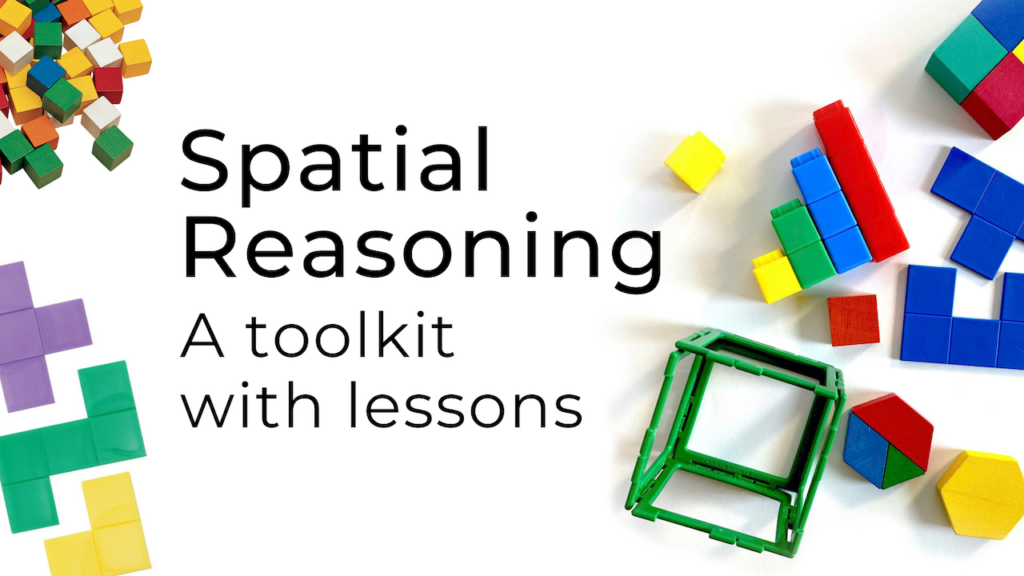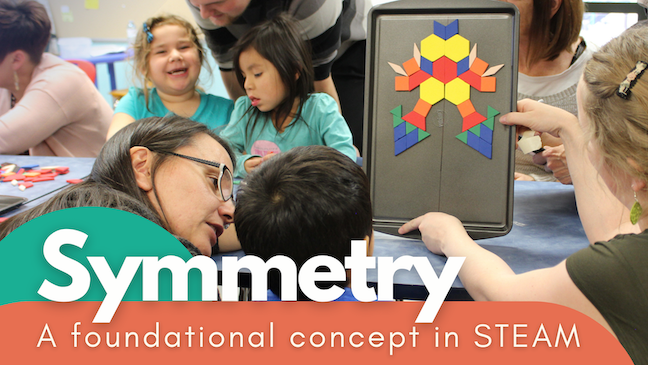Symmetry Game
Early Years (Age 3 – 6)
Curriculum Goal
Kindergarten: Demonstrating Literacy and Mathematics Behaviour
- Describe, sort, classify, build, and compare two-dimensional shapes and three-dimensional figures, and describe the location and movement of objects through investigation (#17).
Context
- Students and the teacher begin by sitting on the floor in a circle.
- After the teacher has explained the game, students will play in pairs.
Materials
- Whiteboard with a line of symmetry and markers
- 8.5 x 11 paper with different shapes on each paper, folded (Appendix A)
- Magnetic boards (e.g., cookie sheets) with a line of symmetry
- Magnetic shapes
Lesson
- Show students a half of a heart drawn on a sheet of paper. Ask students what they think would happen if you cut that shape out and opened it up.
- After gathering some ideas, cut the shape out and show them the result. Repeat with different shapes.
- Turn their attention to the whiteboard with the line of symmetry on it. Explain what a line of symmetry is.
- Explain to students that they will play a game where one person puts a shape down and the other person needs to put the same shape down in a way that follows the rules of symmetry.
- Demonstrate this on the whiteboard.
- After students have shown that they understand how to play, provide them with their own magnetic boards and have them play the game with a partner.
- Gather the students in a circle again and have them look at each other’s designs.
Look Fors
- Can children make symmetrical designs?
- Does the child place the correct shape in the right location to match a symmetrical design?
- What do children already know about shapes? Can they name or notice different properties of the shapes?
- What strategies to children use to make sure they are making a symmetrical design?
- What spatial language do children use?
Extension
- Recreate the designs using other pattern blocks or reconstruct another student’s design.
- Use the designs to talk about slides and flips. Which shapes don’t have to be flipped to get the symmetrical image?
- Describe the area of a design in terms of triangles (e.g., a trapezoid = three triangles)
- Assign a value to each 2D shape. For example, if a triangle is worth $1, what would the hexagon be worth? ($6). How much would your entire design add up to?
- Explore fractions by comparing shapes: What fraction of the hexagon is a trapezoid? Triangle? Rhombus?
- Have students measure the perimeter of their designs and see who has the largest perimeter. Ask them to make their perimeter smaller or larger without changing the number of pieces.
- Pattern identification: are there repeating patterns?
- Cut a piece of grid chart paper to fit on the cookie sheet. Design a symmetrical creation over top of the paper and try to figure out the area of the negative space. Create questions involving negative space: How many triangles could you fit in the negative space?
- Create a puzzle: trace a design and give it to students. Tell them how many pieces are required to fit the puzzle or provide a list of the actual shapes used and ask them to fill in the shape.
- Stack the pieces in shape groups to create a 3D graph of how many of each type were used in the image.
- Language Arts connection: invite students to create personalities and names for the images/designs they’ve created and make a story.
Share this lesson
Share on facebook
Share on twitter
Share on email


